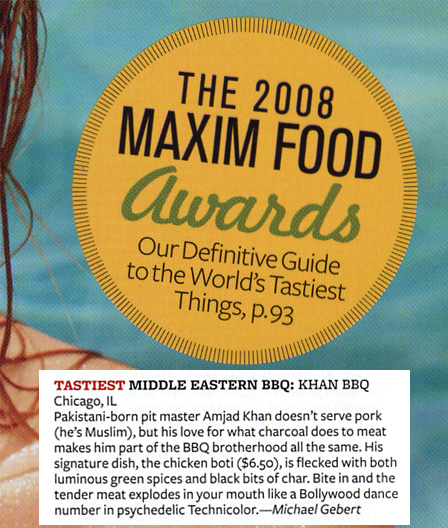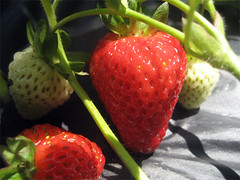
I received Deborah Madison’s Vegetarian Cooking For Everyone for Christmas. This is what you married men will recognize as “a hint.” Nevertheless it remained pristine on a shelf for several months. Frankly, the world of purely vegetarian cooking was too alien for me to even get into readily— without that hunk of meat at the middle of the plate, I had no organizing principle for a meal. Sure, I have vegetarian dishes I make regularly, “train tracks” and veggie chili and so on, but I didn’t have a sense of what vegetarian cooking in a bigger sense would be like, unless it was all stews out of a big pot until the end of time. More lentils, anyone? And I was very determined not to start using any pseudofoods like tempehburgers or seitandogs or Philly cheesequornsteaks or milletfoie gras; if I was going to cook veggian, it was going to be real food with real flavor that just happened not to include meat. And so the book sat, awaiting its perfect moment to be tackled as a project, which you married men will recognize often means being put off forever.
As it happened, though, a few months later I read The United States of Arugula and learned quite a bit about Madison. Who, it turns out, is an important person in American history, as she was arguably the first vegetarian hippie commune chef to take a look at all those brown rice casseroles, think “Vishnu, there’s got to be something better than this slop,” and go get herself a solid food education so she could make vegetarian food that actually had flavor and texture and artistry and didn’t just reek of the self-congratulation of virtuous awfulness. (I paraphrase the argument.)
So I had newfound respect for her after reading her history, but I still didn’t know quite how to get into the book. Then our friends in Austin, that paradoxical place half in barbecue country and half in tofupia, announced on the eve of our trip there that they had pretty much become vegetarians. (Not 100%, as it would turn out.) Gone were the nights at Salt Lick. Even Mexican food was problematic (easier, admittedly, the yuppier a place got, as it would be more likely to offer veg’n offerings and not to unthinkingly put lard into everything). No checking how they were doing on the fried chicken I’d taught them to make.
But what it was, was a chance to force myself to cook out of Madison’s book. So here are three things I tried making during our week there, with varying levels of satisfaction.
Stock For Stir Fries, p. 262
This of course is not a meal, it’s an ingredient for one of the other meals. Nevertheless, a good test for whether something constructed out of vegetables could serve a role normally played by a meat stock. There was no long slow cooking; in 45 minutes a pot full of shiitakes, scallions, onions, mung bean sprouts, cilantro, garlic and ginger, with a little rice wine, soy sauce and dark sesame oil, had become a brownish stock which tasted mainly like onions and soy sauce. Nonetheless, it was entirely the right flavors for stirfry, and easy to make, I filled tiny ziploc bags with it and froze it in 1/2C increments, my friends should, I hope, use it happily for some months– and I will probably make more for myself very soon.
Vegetable Stir-Fry with Glass Noodles, p. 271
And here’s what it went into. A pretty standard but entirely decent stir fry, done with some difficulty in a tiny enameled wok that probably dates to the 1950s (a gift from a worldly aunt to one of my friends’ parents, who probably never used it once unless, maybe, they ran out of buckets when the roof leaked). It went over pretty well, introducing the kids to some new vegetables (bok choy!), though since it was also the 4th… they ate it as a side dish with hot dogs.
Red Bean Gumbo with Greens, p. 321
I’m not sure I would have chosen this— actually I’m looking forward to trying some of the more middle-eastern dishes, which my hostess in Austin had no interest in— but it proved a good test of how closely we could imitate a dish deeply rooted in the Southern traditions of sticking a big ole hunk of pork at the base of every dish. The answer was different for me than for them. They found it deep and flavorful and eagerly looked forward to the frozen leftovers (which might well prove to be better with some aging). I thought Madison’s attempt to concoct a deep broth flavor out of greens and herbs was exactly the kind of meat-mimicry I don’t like and don’t want to get into; for me, a far better version of this dish would be to take Madison’s veggie-oriented stew and root it in the flavor of a small, but discernable, piece of tasso ham or something similar, so the gumbo gets the benefits of the flavor of pork but remains a stew loaded with vegetables.


 Posted in
Posted in 








